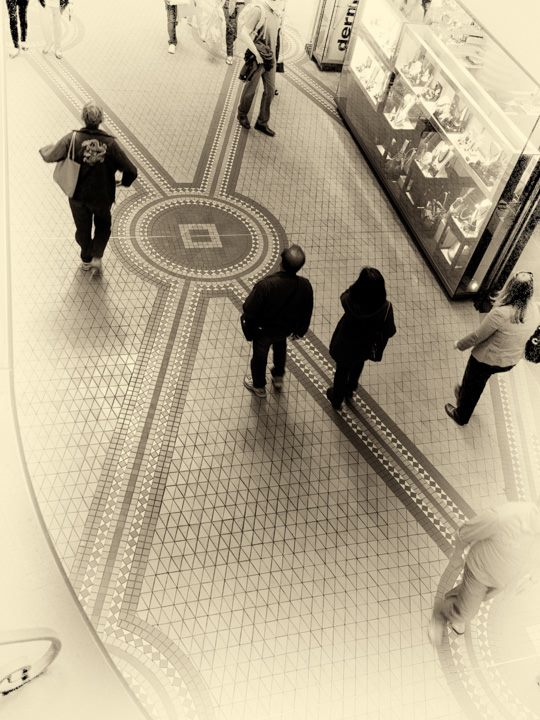In his latest essay on interpretation of the urban environment, Chuck Wolfe suggests that if we take away context clues cities become matrices -- with blank cells to complete -- where each of us personalizes how space meets time.
 Writing in The Huffington Post, Wolfe suggests and illustrates how:
Writing in The Huffington Post, Wolfe suggests and illustrates how:
A uniform filter applied to multiple urban scenes can easily warp time and location, and obscure --- yet somehow enhance -- the reality of place. Remove color, crop, leave only hint and nuance, and the city can become an off-trail place where inquiry is a form of intellectual rescue and rediscovery. This simple premise informs our point of view about city life.
He provides ten visual examples of edited, ageless photographs and asks five associated questions:
- Is it apparent when the photo occured?
- Is the location clear? If so, is such clarity based on personal familiarity with the location?
- Is the context of the scene readily understandable? What more would be needed to offer a more complete answer to questions of when and where?
- Which element of urban life seems the most important to the composition (e.g. safety, environment, mode of transportation, role of public space, public/private interface)?
- What questions remain?
Wolfe concludes:
The answers are for each of us to develop and consider, but one message stands out. Take apart the most fundamental things we see everyday. Inquire, and on the rebound, literally and figuratively, each of us will see things in a whole new light.
FULL STORY: Timeless or Time-Bound in the City?

Planetizen Federal Action Tracker
A weekly monitor of how Trump’s orders and actions are impacting planners and planning in America.

Chicago’s Ghost Rails
Just beneath the surface of the modern city lie the remnants of its expansive early 20th-century streetcar system.

Amtrak Cutting Jobs, Funding to High-Speed Rail
The agency plans to cut 10 percent of its workforce and has confirmed it will not fund new high-speed rail projects.

Ohio Forces Data Centers to Prepay for Power
Utilities are calling on states to hold data center operators responsible for new energy demands to prevent leaving consumers on the hook for their bills.

MARTA CEO Steps Down Amid Citizenship Concerns
MARTA’s board announced Thursday that its chief, who is from Canada, is resigning due to questions about his immigration status.

Silicon Valley ‘Bike Superhighway’ Awarded $14M State Grant
A Caltrans grant brings the 10-mile Central Bikeway project connecting Santa Clara and East San Jose closer to fruition.
Urban Design for Planners 1: Software Tools
This six-course series explores essential urban design concepts using open source software and equips planners with the tools they need to participate fully in the urban design process.
Planning for Universal Design
Learn the tools for implementing Universal Design in planning regulations.
Caltrans
City of Fort Worth
Mpact (founded as Rail~Volution)
City of Camden Redevelopment Agency
City of Astoria
City of Portland
City of Laramie


























